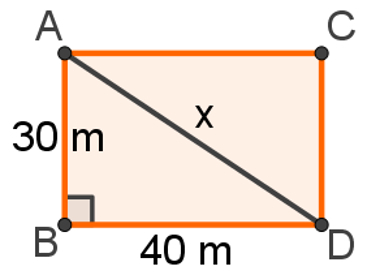At first degree equations are mathematical sentences that establish relations of equality between known and unknown terms, represented in the form:
ax+b = 0
Hence a and b are real numbers, where a is a non-zero value (a ≠ 0) and x represents the unknown value.
The unknown value is called unknown which means "term to be determined". 1st degree equations can present one or more unknowns.
Unknowns are expressed by any letter, and the most used are x, y, z. In first-degree equations, the exponent of the unknowns is always equal to 1.
The equalities 2.x = 4, 9x + 3 y = 2 and 5 = 20a + b are examples of 1st degree equations. The 3x equations2+5x-3 =0, x3+5y= 9 are not of this type.
The left side of an equality is called the 1st member of the equation and the right side is called the 2nd member.
How to solve a first degree equation?
The goal of solving a first-degree equation is to discover the unknown value, that is, to find the unknown value that makes the equality true.
For this, you must isolate the unknown elements on one side of the equal sign and the constant values on the other side.
However, it is important to note that changing the position of these elements must be done in such a way that equality remains true.
When a term in the equation changes sides of the equals sign, we must reverse the operation. So, if you have multiplying, it will pass dividing, if you have adding, it will pass subtracting and vice versa.
Example
What is the value of the unknown x that makes the equality 8x - 3 = 5 true?
Solution
To solve the equation, we must isolate x. To do this, let's first pass the 3 to the other side of the equals sign. As he is subtracting, he will pass adding. Thus:
8x = 5 + 3
8x = 8
Now we can pass the 8, which is multiplying the x, to the other side by dividing:
x = 8/8
x = 1
Another basic rule for developing first-degree equations states the following:
If the variable or unknown part of the equation is negative, we must multiply all members of the equation by –1. For example:
– 9x = – 90. (-1)
9x = 90
x = 10
Solved Exercises
Exercise 1
Ana was born 8 years after her sister Natalia. At one point in her life, Natalia was triple Ana's age. Calculate their age at that time.
Solution
To solve this type of problem, an unknown is used to establish the equality relationship.
So let's call Anna's age the element x. As Natalia is eight years older than Ana, her age will be equal to x + 8.
Therefore, Ana's age times 3 will be equal to Natalia's age: 3x = x + 8
Established these relationships, when passing the x to the other side of equality, we have:
3x - x = 8
2x = 8
x = 8/2
x = 4
Therefore, since x is Ana's age, at that moment she will have 4 years. Meanwhile, Natalia will have 12 years, triple Ana's age (8 years more).
Exercise 2
Solve the equations below:
a) x - 3 = 9
x = 9 + 3
x = 12
b) 4x - 9 = 1 - 2x
4x + 2x = 1 + 9
6x = 10
x = 10/6
c) x + 5 = 20 - 4x
x + 4x = 20 - 5
5x = 15
x = 5/15
x = 3
d) 9x - 4x + 10 = 7x - 30
9x - 4x - 7x = - 10 - 30
- 2x = - 40 (-1) multiply all terms by -1
2x = 40
x = 40/2
x = 20
Read too:
- inequality
- Elementary School Equation - Exercises
- Exercises on 1st Degree Equation with an Unknown
- Second degree equation
- High School Equation - Exercises
- Equation Systems
- 1st degree Equation Systems - Exercises
- Rule of Three Exercises
- Related Function Exercises
- irrational equations



